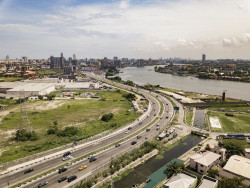Experts are urging a coordinated regional response to address the growing human toll along the Red Sea’s irregular migration route, as thousands of desperate migrants, mainly from the Horn of Africa, continue to risk their lives crossing the perilous waters.
Earlier this week, the International Organization for Migration (IOM) reported that at least 636 migrants have died or gone missing in the Red Sea route since the start of this year, already surpassing last year’s figure. Over the past decade, the Intergovernmental Authority on Development (IGAD) estimated this route has claimed around 3,400 lives.
The IOM classified the Red Sea route, also known as the eastern migration route connecting the Horn of Africa to the Arabian Peninsula, as one of “the busiest and most dangerous migration corridors” worldwide. IOM data showed that movements along it increased by 34 percent between 2024 and 2025, with the surge in irregular migration traffic matched by a worsening humanitarian toll.
Agnes Igoye, a migration expert with IGAD, said the route is a key pathway for irregular migrants from Horn of Africa countries as they attempt to cross “harsh overland treks through deserts and risky sea voyages” in hopes of reaching Yemen, often seen as a gateway to Gulf countries.
She said limited safe and regular migration pathways, coupled with deepening economic hardship, leave many with few alternatives. The promise of work in the Middle East and Gulf countries continues to draw young people despite the grave risks.
In 2024 alone, IGAD data show that 60,000 migrants arrived irregularly in Yemen, a nation still mired in conflict, leaving many stranded and exposed to exploitation. Most were young people aged 16 to 25, according to IOM.
Migration is also driven by conflict, political instability, and climate shocks such as drought, floods, and famine. The route also operates in reverse, with migrants forcibly returned from Yemen, further straining resources in transit countries like Djibouti, particularly in its northern regions, where communities struggle to support the growing influx of vulnerable migrants.
Experts and policymakers emphasize that addressing the escalating challenges associated with the Red Sea migration route requires a comprehensive strategy that targets the root causes of migration through long-term measures to address conflict, poverty, unemployment, and climate-related challenges.
At a high-level regional conference on labor and employment held in Kenya’s capital of Nairobi last week, IGAD ministers and security authorities adopted a “whole-of-route, whole-of-society, and whole-of-government” approach through a collaborative framework involving countries of origin, transit, and destination.
In a joint communique, the ministers emphasized the necessity to create decent employment opportunities for young people, especially in green industries, manufacturing, and the digital economy, to reduce migration pressures.
Experts highlighted that skills’ development, job creation, and economic diversification are crucial for providing viable alternatives to the region’s youth, who represent the majority of those migrating.
According to Igoye, sustainable solutions will require interconnected initiatives, including improving border governance and security, fostering cross-border collaboration among IGAD member states, increasing humanitarian support and protection services for vulnerable migrants, investing in return and reintegration programs, and enhancing cooperation with destination countries to establish safe and regular migration pathways. Enditem
Source: Xinhua
Share Us



